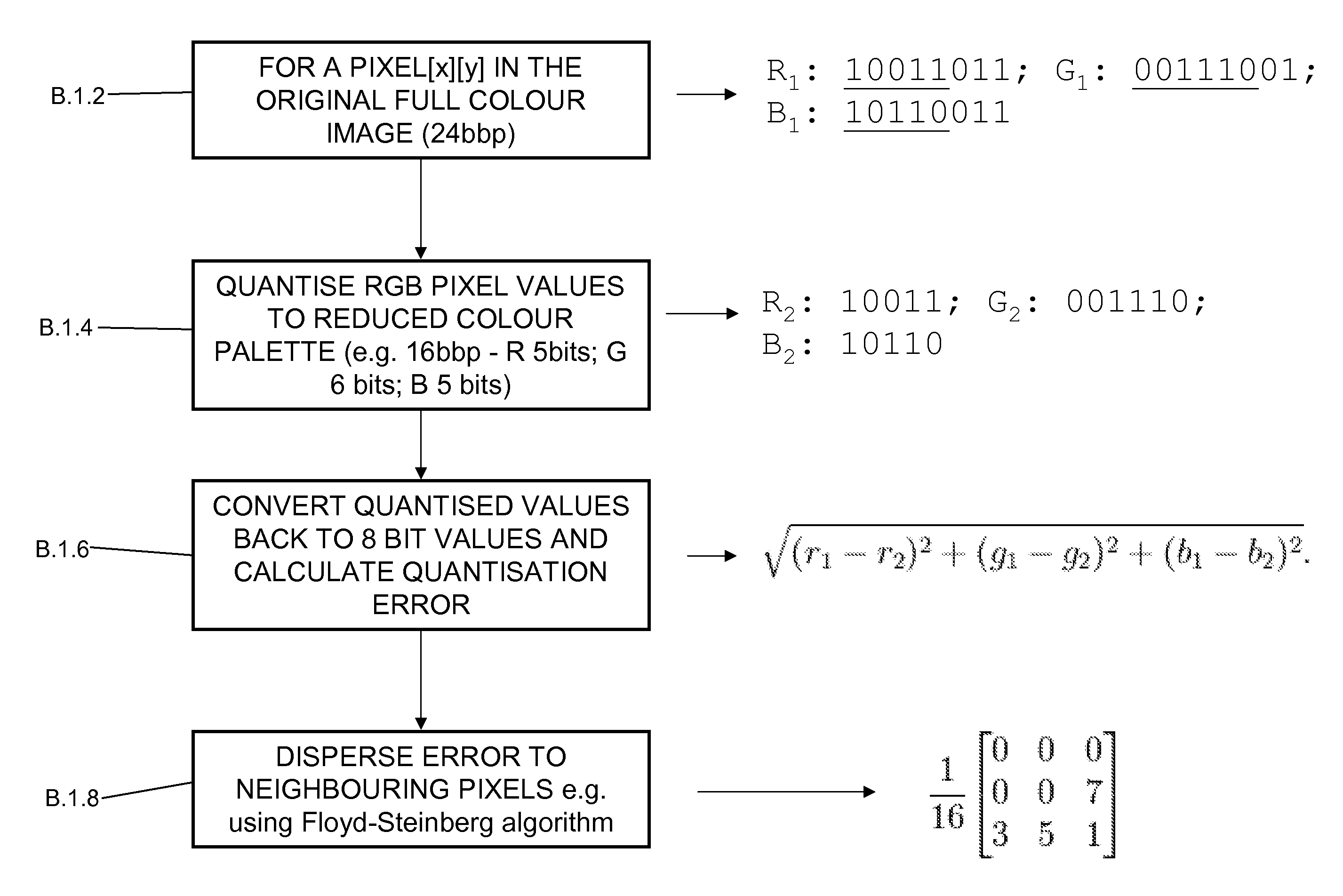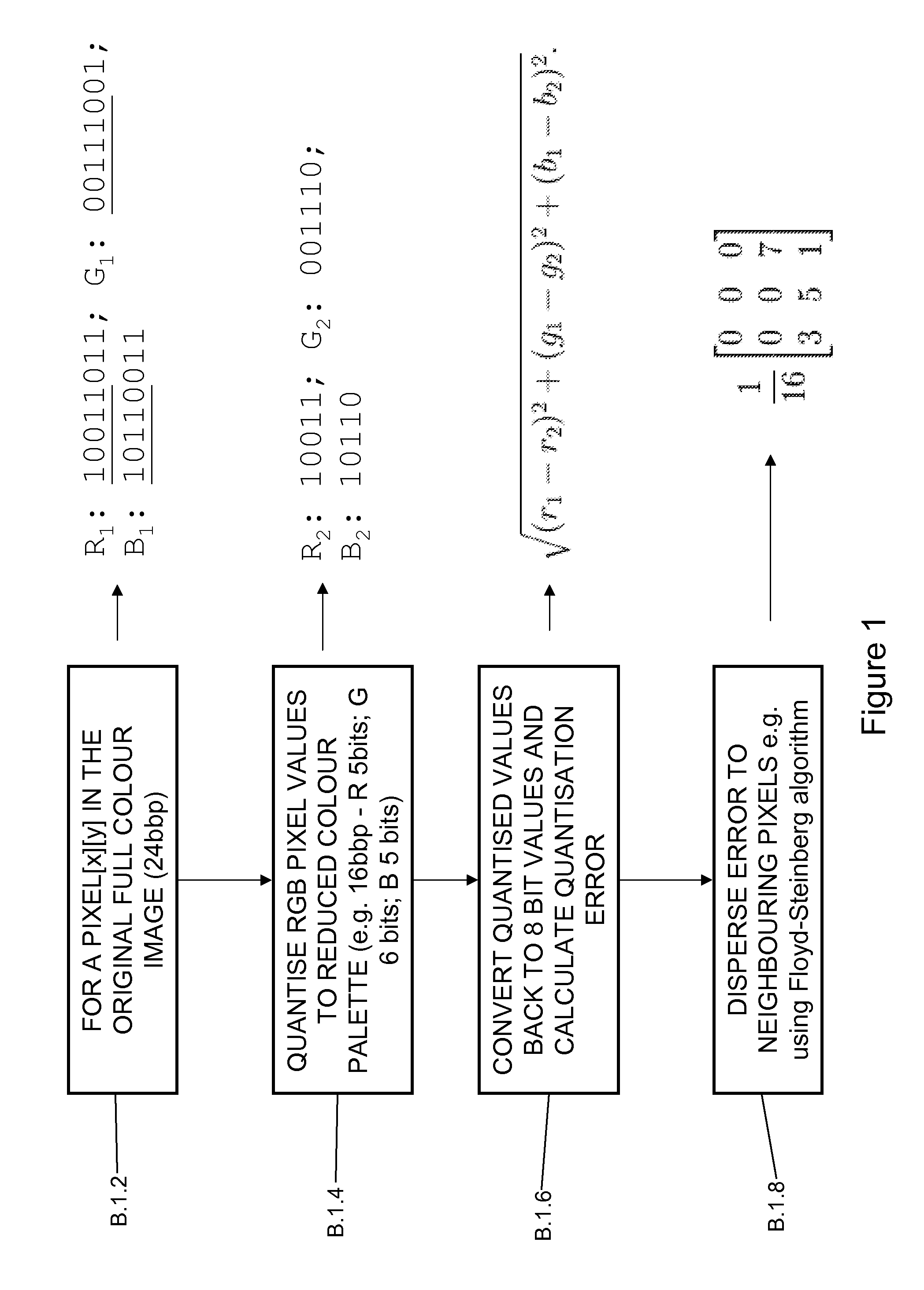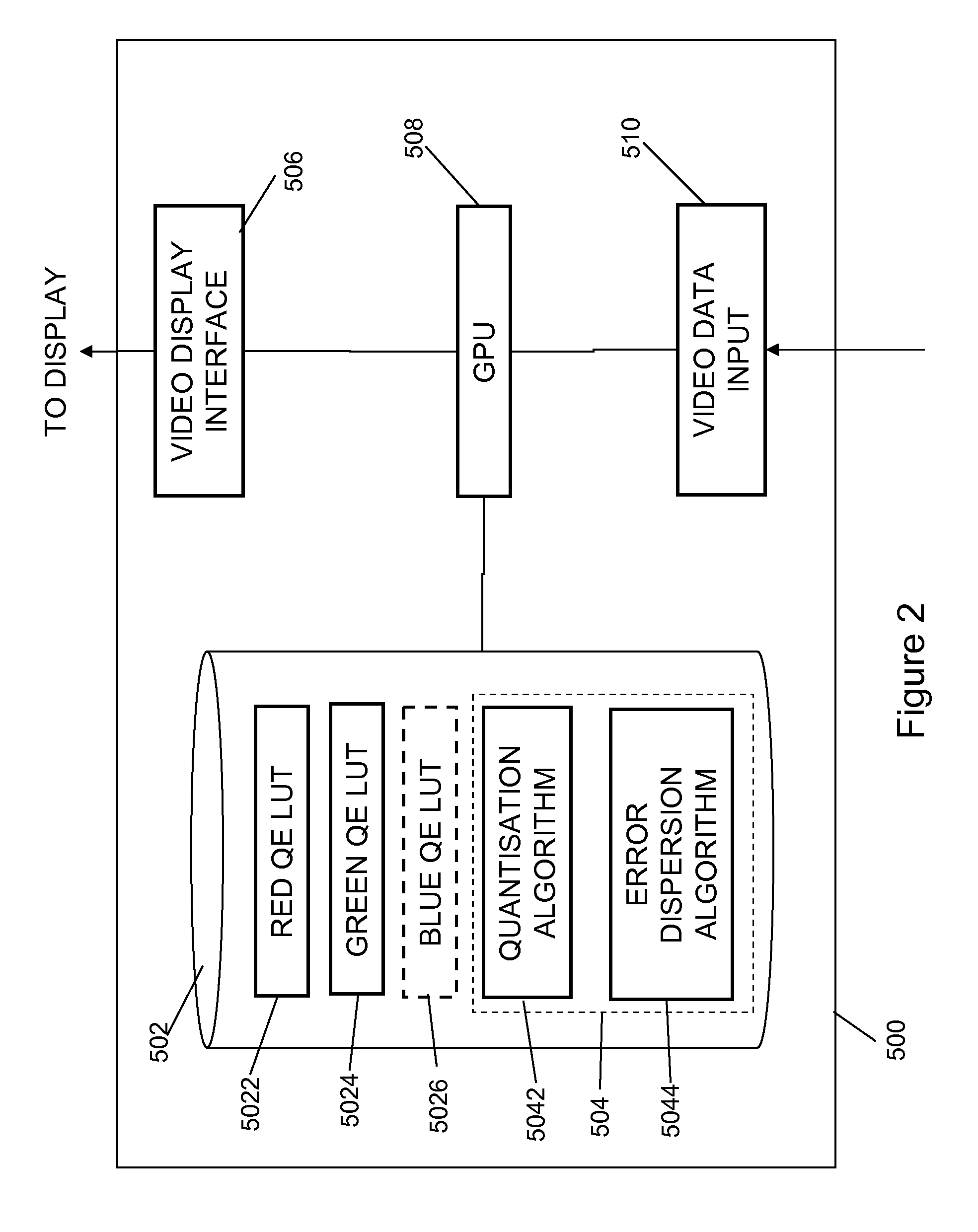Method and Apparatus for Finding Data Quantisation Error
a technology for quantisation errors and methods, applied in electrical devices, instruments, computing, etc., can solve problems such as quantisation errors, and achieve the effect of reducing the number of significant bits
- Summary
- Abstract
- Description
- Claims
- Application Information
AI Technical Summary
Benefits of technology
Problems solved by technology
Method used
Image
Examples
Embodiment Construction
[0026]The more information that is used to represent colours in an image, the greater the number of colours that can be displayed. For example, so called “full-colour” or “true colour” displays require 24 bits per pixel, with each of the red, green, and blue channels having 8 bits, giving 256 different colour levels in each channel, to give 16,777,216 different colours. However, many devices and displays are incapable of displaying such high colour resolution, and instead are capable of displaying so-called “high-colour” images only, where only 16 bits (or in some examples 15-bits) are used to represent the colour: 5 bits for red and blue channels, and 6 bits (5 bits in 15-bit high colour) for the green channel.
[0027]The process of converting from 24 bit colour to 16 bit or 15 bit colour is known as colour quantisation, and several colour quantisation algorithms are known. For example, a so-called “median-cut” algorithm can be used to find the 64 k colours that best match the origin...
PUM
 Login to View More
Login to View More Abstract
Description
Claims
Application Information
 Login to View More
Login to View More - R&D
- Intellectual Property
- Life Sciences
- Materials
- Tech Scout
- Unparalleled Data Quality
- Higher Quality Content
- 60% Fewer Hallucinations
Browse by: Latest US Patents, China's latest patents, Technical Efficacy Thesaurus, Application Domain, Technology Topic, Popular Technical Reports.
© 2025 PatSnap. All rights reserved.Legal|Privacy policy|Modern Slavery Act Transparency Statement|Sitemap|About US| Contact US: help@patsnap.com



